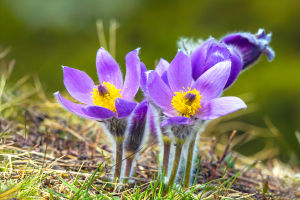Succulent plants are nature's survival experts. With their ability to thrive in some of the driest environments on Earth, they are the perfect example of ecological adaptation.
Have you ever wondered how these tough little plants manage to flourish without much water? Let's dive into the fascinating world of succulents and explore their unique strategies for surviving dry conditions.
What Makes Succulents So Resilient?
Succulents are not just any ordinary plants. Their name comes from their ability to store water in their leaves, stems, and roots. This characteristic makes them perfectly suited for arid climates where rainfall is scarce.
Unlike other plants that require regular watering, succulents have a built-in water reservoir. This allows them to withstand long periods of drought without wilting. But how do they actually store this water? It's all thanks to their thick, fleshy tissues that can absorb and retain moisture. In fact, some succulents can store enough water to survive for months without additional rainfall.
The Water Storage System
The key to a succulent's success in dry environments lies in its unique ability to store water in its tissues. Their leaves and stems are specialized to store large quantities of water, sometimes swelling up to several times their normal size. This water storage capability allows them to go for weeks or even months without a drop of rain.
A well-known example is the aloe vera plant, which has fleshy leaves that hold significant amounts of water. These plants have evolved to conserve water efficiently, limiting evaporation by closing their pores (stomata) during the hottest parts of the day.
Efficient Water Usage
Succulents have developed other smart mechanisms to reduce water loss. One such adaptation is the ability to perform a type of photosynthesis called CAM (Crassulacean Acid Metabolism). Unlike typical plants, which open their stomata during the day to take in carbon dioxide, succulents open their stomata at night, when the air is cooler and humidity is higher. This reduces water loss and allows them to retain moisture during the day when conditions are more extreme.
Another interesting feature is the waxy coating on their leaves. This layer acts as a barrier, reducing water evaporation and keeping moisture locked inside. It's one of the reasons why succulents are so good at handling heat and dry air.
Adaptations for Extreme Environments
While succulents are known for their ability to survive in dry conditions, they also have other adaptations that help them thrive in extreme environments. Some succulents have deep root systems that can reach underground water sources. Others, like the cactus, have shallow but widespread root systems that allow them to collect rainwater quickly when it does fall.
In addition to their water-saving features, succulents are also equipped to survive high temperatures. Their thick, fleshy leaves not only store water but also protect them from the harsh sun by reflecting light. This helps prevent the plant from overheating and losing too much moisture to the sun's intense rays.
Succulent Gardening Tips for Homeowners
Succulent plants are popular in home gardening due to their low-maintenance nature. If you want to bring a bit of the desert into your home, here are some tips for cultivating succulents:
1. Soil: Use well-draining soil to prevent root rot. A mix of sand, perlite, and potting soil is ideal.
2. Watering: Water succulents sparingly. Only water when the soil has completely dried out.
3. Light: Succulents thrive in bright, indirect light. Make sure they get plenty of sunlight, but avoid direct sunlight for long periods.
4. Containers: Use planters with drainage holes to allow excess water to escape. This helps prevent water from accumulating at the bottom of the planter and causing root rot.
Conclusion: Nature's Drought Survivors
Succulent plants are a testament to the power of nature's ingenuity. Their ability to store water, conserve moisture, and adapt to extreme conditions allows them to survive and even thrive in environments where most plants would struggle. By understanding how succulents work, we can better appreciate their beauty and resilience.
Whether you're a seasoned gardener or a beginner, succulents are a great addition to any home. Their unique survival tactics remind us that nature always finds a way to adapt, even in the harshest environments.


